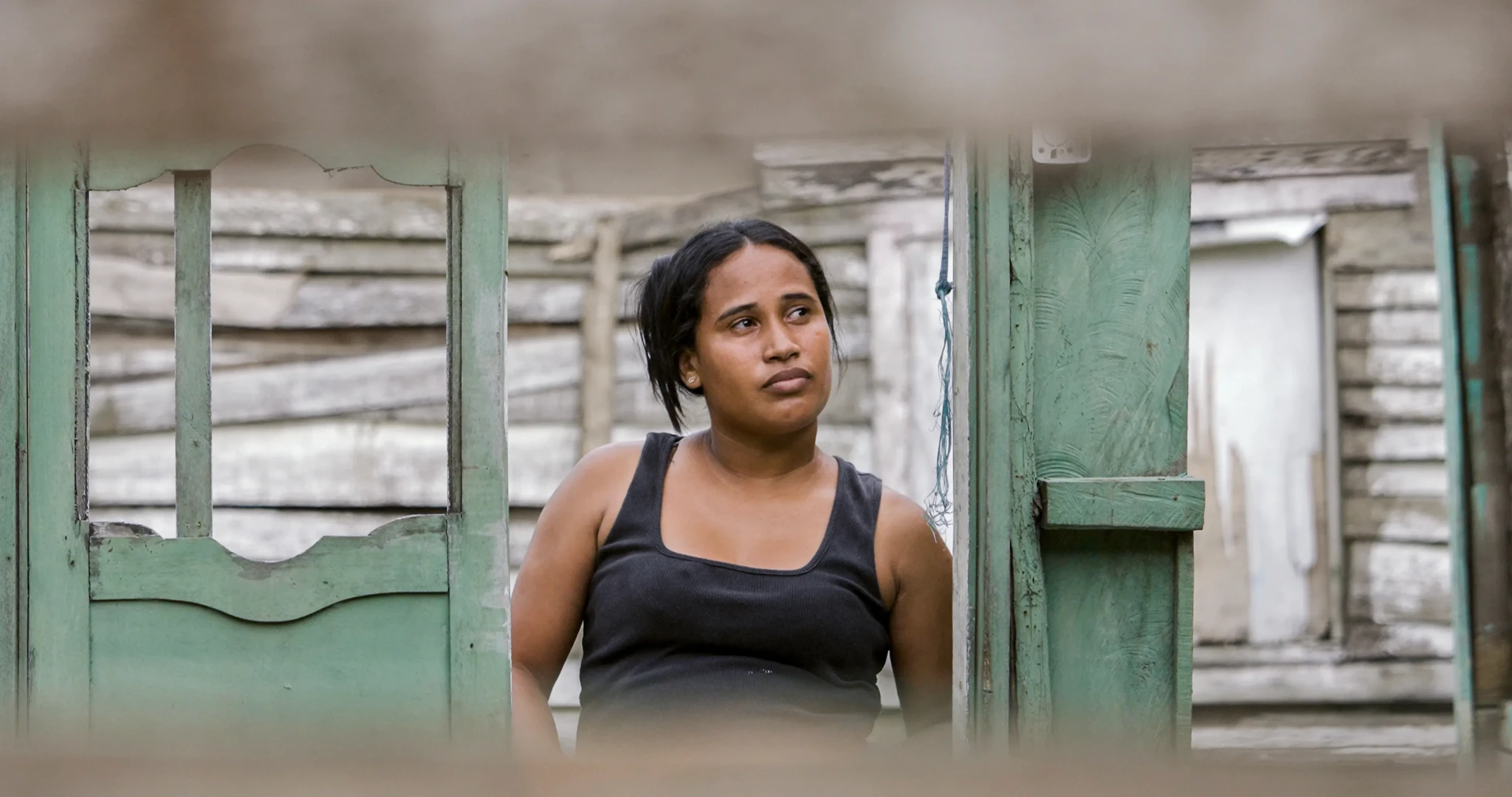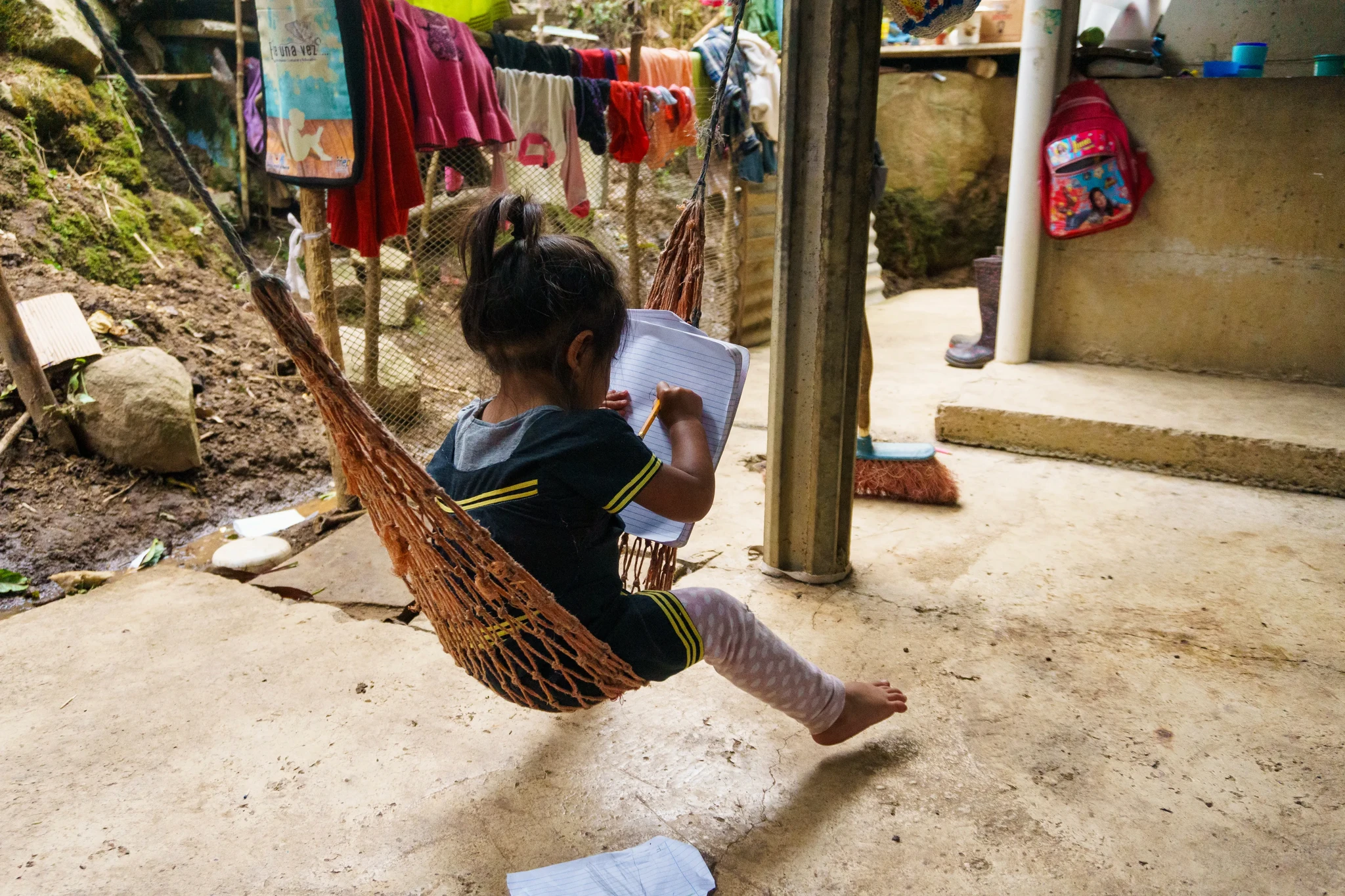

STORY
4
.
4
Trapped in Place
Some groups - particularly women and migrants - feel unable to move, even if they wanted to.



STORY
4
.
4
Trapped in Place
Some groups - particularly women and migrants - feel unable to move, even if they wanted to.



STORY
4
.
4
Trapped in Place
Some groups - particularly women and migrants - feel unable to move, even if they wanted to.

For many in the Greater Caribbean, moving is simply not an option.
For many in the Greater Caribbean, moving is simply not an option.
For many in the Greater Caribbean, moving is simply not an option.
Climate stressors, along with social, economic, and political challenges, force some to stay even when they would prefer to leave. Those who are trapped in place have fewer resources to adapt to the impacts of climate change. Still, they will need to find ways to cope with more environmental and economic disruptions ahead.
Climate stressors, along with social, economic, and political challenges, force some to stay even when they would prefer to leave. Those who are trapped in place have fewer resources to adapt to the impacts of climate change. Still, they will need to find ways to cope with more environmental and economic disruptions ahead.
Climate stressors, along with social, economic, and political challenges, force some to stay even when they would prefer to leave. Those who are trapped in place have fewer resources to adapt to the impacts of climate change. Still, they will need to find ways to cope with more environmental and economic disruptions ahead.
Figure 1
Facing a difficult financial situation is correlated to a stronger preference to stay in place, with some variation across the region. This is especially true in Colombia, the Bahamas, Antigua and Barbuda, and Jamaica.
Regression analysis of GCCMI survey data. Preference to stay plotted against whether respondents reported a difficult household’s financial situation
Source: GCCMI Survey data, 2024. Based on surveys in 14 communities across 6 countries in the Greater Caribbean region.

Figure 1
Facing a difficult financial situation is correlated to a stronger preference to stay in place, with some variation across the region. This is especially true in Colombia, the Bahamas, Antigua and Barbuda, and Jamaica.
Regression analysis of GCCMI survey data. Preference to stay plotted against whether respondents reported a difficult household’s financial situation

Source: GCCMI Survey data, 2024. Based on surveys in 14 communities across 6 countries in the Greater Caribbean region.
Figure 1
Facing a difficult financial situation is correlated to a stronger preference to stay in place, with some variation across the region. This is especially true in Colombia, the Bahamas, Antigua and Barbuda, and Jamaica.
Regression analysis of GCCMI survey data. Preference to stay plotted against whether respondents reported a difficult household’s financial situation

Source: GCCMI Survey data, 2024. Based on surveys in 14 communities across 6 countries in the Greater Caribbean region.
Many factors, including age, citizenship status, and educational attainment, shape how people experience climate change and how they are able to adapt.
Many factors, including age, citizenship status, and educational attainment, shape how people experience climate change and how they are able to adapt.
Many factors, including age, citizenship status, and educational attainment, shape how people experience climate change and how they are able to adapt.
Older age (being over 35) and less education (only possessing primary schooling) are correlated to a lower capacity to move. Involuntary immobility is also reinforced by poverty, lack of formal and safe housing options, insecure legal status, and precarious livelihoods. As a result, immobility affects primarily those who are already marginalized. For instance, in The Bahamas, undocumented Haitian migrants living in informal settlements on Abaco Island were hesitant to leave during Hurricane Dorian, for fear of being arrested or deported.
Indigenous people across the region are fighting to secure recognition of land rights. Many are reluctant to move when faced with climate stresses for fear of not being able to return.
Women are more likely than men to report being unable to move despite the desire to. They were also more likely to weigh climate change as a factor when considering future mobility. Traditional gender roles affect women’s intention and capacity to migrate in the context of climate change. Most historical forms of mobility in the region have been dominated by men. A prime example is the coffee-growing town of Dota, Costa Rica, which has come to be known as “the city of single women.” Climate change impacts on the coffee industry have reinforced decades of male mobility to the United States. Young men move to support their families through remittances, while women stay home to care for the family, home, or property.
Older age (being over 35) and less education (only possessing primary schooling) are correlated to a lower capacity to move. Involuntary immobility is also reinforced by poverty, lack of formal and safe housing options, insecure legal status, and precarious livelihoods. As a result, immobility affects primarily those who are already marginalized. For instance, in The Bahamas, undocumented Haitian migrants living in informal settlements on Abaco Island were hesitant to leave during Hurricane Dorian, for fear of being arrested or deported.
Indigenous people across the region are fighting to secure recognition of land rights. Many are reluctant to move when faced with climate stresses for fear of not being able to return.
Women are more likely than men to report being unable to move despite the desire to. They were also more likely to weigh climate change as a factor when considering future mobility. Traditional gender roles affect women’s intention and capacity to migrate in the context of climate change. Most historical forms of mobility in the region have been dominated by men. A prime example is the coffee-growing town of Dota, Costa Rica, which has come to be known as “the city of single women.” Climate change impacts on the coffee industry have reinforced decades of male mobility to the United States. Young men move to support their families through remittances, while women stay home to care for the family, home, or property.
Older age (being over 35) and less education (only possessing primary schooling) are correlated to a lower capacity to move. Involuntary immobility is also reinforced by poverty, lack of formal and safe housing options, insecure legal status, and precarious livelihoods. As a result, immobility affects primarily those who are already marginalized. For instance, in The Bahamas, undocumented Haitian migrants living in informal settlements on Abaco Island were hesitant to leave during Hurricane Dorian, for fear of being arrested or deported.
Indigenous people across the region are fighting to secure recognition of land rights. Many are reluctant to move when faced with climate stresses for fear of not being able to return.
Women are more likely than men to report being unable to move despite the desire to. They were also more likely to weigh climate change as a factor when considering future mobility. Traditional gender roles affect women’s intention and capacity to migrate in the context of climate change. Most historical forms of mobility in the region have been dominated by men. A prime example is the coffee-growing town of Dota, Costa Rica, which has come to be known as “the city of single women.” Climate change impacts on the coffee industry have reinforced decades of male mobility to the United States. Young men move to support their families through remittances, while women stay home to care for the family, home, or property.
References
Based on GCCMI survey results.
References
Based on GCCMI survey results.
References
Based on GCCMI survey results.





